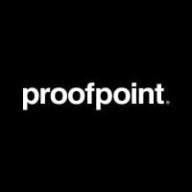

Cisco Secure Email and Proofpoint Email Protection are prominent competitors in email security. While users appreciate Cisco for pricing and support, Proofpoint takes the upper hand due to its extensive features.
Features: Cisco Secure Email offers inbound services with Advanced Malware Protection and email certification, providing ease of use and retrospective analysis for spam blocking. Proofpoint Email Protection excels with features like phishing protection, sandboxing, and TAP, integrating easily and providing robust email security.
Room for Improvement: Cisco Secure Email is criticized for its complex interface, costly licensing, and insufficient outbound services. Users desire better cloud integration and documentation. Proofpoint needs improvement in report customization, search functionality, and intuitiveness, and its pricing is often seen as high.
Ease of Deployment and Customer Service: Cisco Secure Email offers on-premises and cloud deployment, praised for customer service but needs consistency in response times. Proofpoint primarily offers cloud deployment with mixed support reviews citing slow responses and need for local support.
Pricing and ROI: Cisco Secure Email is seen as high-priced but offers good ROI with strong security reducing phishing costs. Proofpoint is expensive, with pricing appealing to large organizations, but costly for smaller businesses, providing good transition value.
Cisco's tech support can be hit or miss, depending on the engineer you get.
The support is pretty decent, with a rating of eight out of ten.
I am familiar with the granular policy control feature of Proofpoint Email Protection, and I find their support excellent for modifying those policies.
The on-premises hardware is not very scalable, but switching to the SaaS offering is expected to improve scalability.
Proofpoint is scalable for multi-site organizations with thousands of users.
Based on my experience, the stability of Cisco Secure Email is very strong.
The solution should better analyze the actual content rather than only focusing on the email header or origin.
It would be beneficial to have the functionality of the Email Threat Defense integrated into the Email Security Gateway so customers don't have to buy two products for full email protection.
Proofpoint could expand its phishing detection capabilities to improve its efficiency.
More security could be implemented.
I believe they still need to improve by consolidating some portals, as currently, you have to log in separately to a few of them.
Its cost is bundled with other Cisco products.
The licensing is a mess and needs sorting out.
The pricing structure is good as it is user-based or email client-based, which is positive for clients.
Customers pay around $90,000 yearly for a 1,000-user organization, with the subscription license being the main expense, apart from implementation fees.
Additional costs do come in, but it enhances security.
It also possesses multiple modules for spam detection, malware detection, and threat intelligence, which are valuable in categorizing emails and determining actions.
It is highly effective in catching phishing and spam emails.
It covers everything through email, like antivirus, IDS, and IPS.
The most beneficial feature of Proofpoint Email Protection is mostly spam filtering; it was very efficient, and we were very happy with the functionality as only relevant emails were allowed for mailboxes.
I appreciate that it's the industry leader, and its firewalling is very easy to manage and implement.
The main feature I find most effective is that Proofpoint Email Protection scans emails and quarantines the doubtful ones.
| Product | Market Share (%) |
|---|---|
| Proofpoint Email Protection | 8.2% |
| Cisco Secure Email | 5.6% |
| Other | 86.2% |


| Company Size | Count |
|---|---|
| Small Business | 22 |
| Midsize Enterprise | 18 |
| Large Enterprise | 25 |
| Company Size | Count |
|---|---|
| Small Business | 21 |
| Midsize Enterprise | 13 |
| Large Enterprise | 17 |
Cisco Secure Email provides email security with advanced threat protection, spam filtering, and easy integration with Cisco Talos, ensuring comprehensive protection against cyber threats like phishing and malware.
Cisco Secure Email offers a comprehensive platform for organizations seeking robust email security. With advanced threat protection and seamless integration with Cisco Talos, it enhances threat intelligence. The tool provides easy-to-use spam blocking and granular policy customization. Effective ransomware, phishing, and malware protection ensures stable network performance. It includes logging and reporting features, along with Active Directory integration, delivering enhanced security without extra hardware. Although it addresses threats efficiently, improvements in synchronization with reporting tools and phishing detection are needed. Organizations find cost and licensing complexities challenging for smaller networks and seek more intuitive configuration, advanced AI threat detection, and comprehensive reporting. Enhanced support, documentation, and cross-platform compatibility are desirable for better management and scalability.
What are the most important features?In industries like finance, healthcare, and IT, Cisco Secure Email is key to securing email communications. It serves as the primary email gateway in datacenters, scanning and filtering emails to defend against phishing, malware, and spam. Many organizations integrate it with Sophos Antivirus and Talos Threat Intelligence for heightened protection. It plays a crucial role in outbound message control and data loss prevention, ensuring compliance with security policies.
Proofpoint Email Protection provides powerful filtering against spam, phishing, and malware, leveraging effective threat detection and blocking capabilities. This solution integrates smoothly with platforms like Office 365, offering a user-friendly dashboard for seamless operations.
Proofpoint Email Protection focuses on email security, ensuring protection against phishing, malware, and spam. It includes features like URL scanning, anti-phishing, anti-virus protection, and sandboxing for comprehensive threat analysis. Its advanced analytics through TAP and TRAP, along with strong integration abilities, make it appealing for handling email threats. While scalability and ease of deployment are advantages, challenges such as integration in complex environments, the cost, and limited local support require attention. Enhancements in search functionality, email encryption, and improved phishing detection are also needed.
What are the key features of Proofpoint Email Protection?Industries adopting Proofpoint Email Protection include finance, healthcare, and education sectors, which benefit from its robust email security measures. Educational institutions prioritize safe communication for staff and students, while healthcare organizations focus on protecting sensitive patient data. Financial services benefit from preventing data breaches and fraud through advanced threats management.
We monitor all Email Security reviews to prevent fraudulent reviews and keep review quality high. We do not post reviews by company employees or direct competitors. We validate each review for authenticity via cross-reference with LinkedIn, and personal follow-up with the reviewer when necessary.